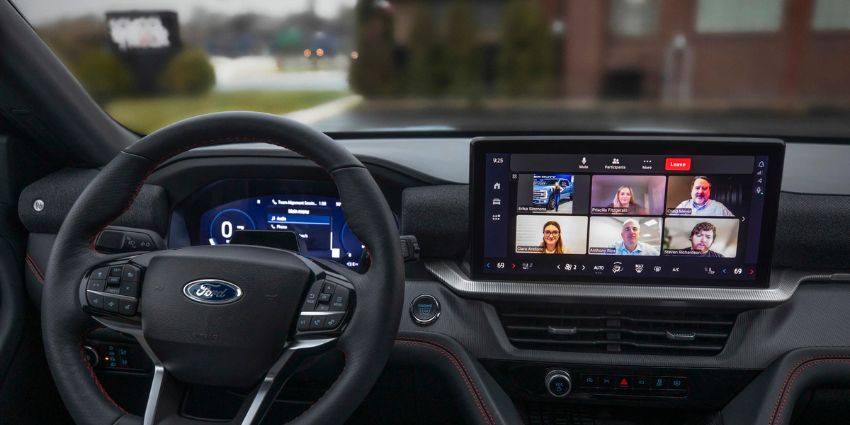AI avatars aren’t an entirely “new” concept in the world of Unified Communications – particularly when it comes to team meetings. For years, companies like Microsoft have given users the option to use avatars when attending video meetings. However, until recently, these avatars have been considered little more than a novelty.
Sure, they offer users an easy way to still be “present” in a meeting when you’re feeling a little too self-conscious to appear on camera. But avatars haven’t actually been able to truly replace people in meetings – responding to questions and sharing insights without human input.
That could all be about to change. As artificial intelligence continues to evolve, innovators like Zoom are exploring new ways to make digital twins more valuable in the hybrid work environment. In the years to come, your AI avatar could potentially learn from your preferences, complete work on your behalf, and fully attend meetings for you, so you can focus your attention elsewhere.
The question is, what will delegating more work to AI digital twins actually mean for the future workforce? Will it lead to more productivity, efficiency, and fewer unnecessary meetings? Or is there a risk that this type of AI will only lead to more ethical, security, and job displacement issues?
The Future of AI Avatars: Zoom’s Vision
Zoom’s founder, Eric Yuan, has certainly shown us he believes that more AI in the workplace is a positive thing. In the last couple of months, Yuan has not only discussed the potential of AI at length at events like Zoomtopia. He’s also engaged in plenty of interviews, sharing his vision for the future of work, enhanced by cutting-edge AI solutions.
Yuan believes that in the future, AI avatars won’t just be tools that allow users to avoid actually appearing on video calls. He’s imagining a landscape where AI systems will be able to learn from the employees they support and take care of more of the tasks we need to navigate each day.
In an interview with The Verge, Yuan said he’s looking forward to a future where his AI assistant will be able to list the meetings he has scheduled for a certain day, and actually tell him which ones he needs to join, and which it can attend on his behalf.
For instance, on a Monday morning, your AI system could tell you that you’re scheduled to attend four meetings, and only one of them actually requires you to share any personal input. For the other three, you’ll be able to send your digital twin along on your behalf. That twin will sit in on the meeting to make it feel like your colleagues are still connecting with you.
It will also take notes from the conversation and share them with you, along with suggesting action items you might need to follow up on later.
The Evolving Role of AI Avatars in UC Tools
Zoom isn’t the only company that sees the potential for AI assistants to become more significant “members” of the workplace. Over the last year, we’ve seen plenty of companies exploring new ways to help team members accomplish more with AI.
Asana recently introduced “AI teammates”, customizable collaborators for flexible teams that can advise teams on tasks to priorities, take action on work, and even assign tasks. Elsewhere, Microsoft and Google have both shared their own visions for AI “team members”.
Microsoft’s Team Copilot, for instance, would potentially be able to sit in on hybrid conversations, surface important information during collaborative sessions, and create to-do lists. These new “digital colleagues” are really just an extension of what we already have in the UC landscape right now.
Countless employees already use solutions like Copilot in Microsoft Teams and Zoom AI Companion to summarize conversations, create content, and manage schedules. The difference is that the “next level” team members and AI avatars that companies like Zoom want to create will potentially do more for us than ever before.
They’ll be able to complete work autonomously and basically act like genuine team members. They won’t just be “assistants;” they’ll be always-on colleagues. This raises a number of questions. Primarily, will more advanced AI team members pave the way to more streamlined, efficient workplaces, contributing to greater work-life balance for human staff?
Will they be able to turbocharge the transition to the four-day work week, like Eric Yuan predicts? Or, will they simply reduce the reliance companies have on human employees, leading to fewer jobs?
The Benefits of Next-Level AI Team Members
There are clearly potential benefits to creating AI avatars and team members that can accomplish more for human workers on a day-to-day basis. Plenty of people are already familiar with the benefits of using AI summary tools and content generation apps to save time.
The digital twin-style AI avatars promised by companies like Zoom will undoubtedly have other benefits too, reducing the amount of time employees waste in meetings that don’t really require their attendance. Although we could argue that if meetings don’t actually need human attendees, they probably shouldn’t be scheduled in the first place.
Plus, if the AI avatars and assistants we have in future UC tools are highly customizable, there’s the potential that we could use them to overcome our own weaknesses. For instance, Yuan suggested that he would potentially use an AI avatar tuned with negotiation skills to help him achieve better results during sales calls. If you know that you struggle with something, like pitching a product to your customers, you could tweak your AI avatar to ensure it excels in this area.
Broadly, it seems like employees feel overwhelmingly positive about the idea. According to one report, around 95% of professionals said they would be happy for an AI avatar to represent them in a meeting. Another 61% said they’d be happy to let AI avatars complete admin-focused tasks, like reminding them of upcoming deadlines or scheduling meetings too.
Some respondents even said they’d be comfortable letting AI avatars handle more traditionally “human” tasks, such as delivering presentations. However, only 13% said they would allow their AI assistants to make decisions on their behalf.
The Potential Issues with Evolving AI Avatars
Of course, just like any AI innovation, the evolving “presence” of AI avatars and teammates in UC solutions raises some concerns, too. The first, and most obvious worry is that enhanced AI avatars will make human beings more “obsolete” in the workplace. In the study mentioned above, 88% said they were concerned about the repercussions of too much AI in the workplace.
There’s also the risk that AI avatars, designed to look and sound exactly like you, could misrepresent you to colleagues and clients. After all, generative AI solutions still make mistakes, and can still suffer from issues with bias and discrimination, based on the data they have. Around 41% of respondents in the study above said they were concerned that AI might represent them in a way that negatively impacts their careers.
On top of that, many industry analysts have shared concerns that an over-reliance on AI digital twins could harm human connection on a broad scale. After all, if your digital twin attends 90% of your meetings for you, what will that mean to your ability to build stronger relationships with other people?
Plus, it’s worth drawing some attention to the growing risks around AI deepfakes. Already criminals around the world have begun using AI to create realistic representations of industry leaders, and even political leaders, exacerbating the spread of misinformation.
If criminals were able to gain access to the digital twins that team members create to represent themselves in meetings, there’s no limit to the potential damage they could do.
Looking Ahead to the Future of AI In UC Tools
Right now, it’s difficult to know exactly what impact more advanced AI avatars and assistants will have on the way we communicate, collaborate, and work in the years ahead. Although the AI solutions available in UC tools are becoming more advanced, they’re not yet capable of acting as the perfect “digital twin.”
Eric Yuan said that it will take a lot of time and work to get AI assistants to a point where they can reliably and safely replicate genuine “team members” in the workplace. Innovators will still need to find ways of effectively overcoming the challenges we’re already aware of with generative AI. We’ll need to find ways to protect digital twins, minimize AI hallucinations, and ensure these solutions deliver consistent results.
At the same time, we’ll need to ensure that these AI innovations do actually support and augment employees, rather than simply replacing them in the workplace. If we do reach a point where AI can attend 90% of your meetings for you, and complete countless “menial” tasks, leaders will need to think about how they can minimize job displacement in a world where AI does half of our work.
Will we all move eagerly towards a future where AI solutions improve work-life balance and enable the four-day work week? Or will we step into a world where there are even fewer opportunities for human beings than ever before?






